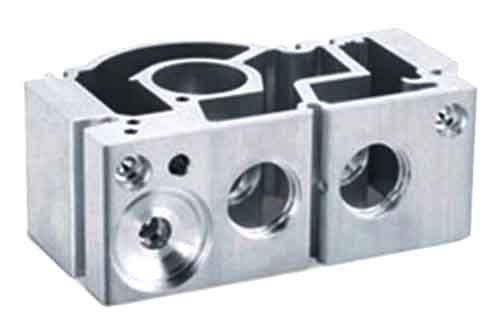Nella recente lavorazione del prototipo di un nuovo prodotto di un'azienda, alcuni pezzi sono realizzati in acciaio inossidabile e altri materiali difficili da lavorare con CNC, come 3Cr13, 3Cr13Mo, 40CrNiMo, 9CrMoV, eccetera. Anche pezzi di questo tipo sono stati lavorati in passato. Sebbene l'efficienza produttiva sia bassa, i lotti sono piccoli, la quantità è piccola, e il ciclo produttivo è breve. Dopo la produzione di massa, i problemi sono stati esposti, gli strumenti erano gravemente usurati, il numero di affilature è aumentato, e i tempi di inattività e di regolazione della macchina utensile sono aumentati. La rugosità superficiale del pezzo è scarsa, i trucioli non sono facili da arricciare e rompere, e la superficie lavorata del pezzo è graffiata, che influisce direttamente sulla qualità del pezzo.
The material of the workpiece is 3Cr13Mo, and the process requirements are processed by CNC lathe except for the grinding of each outer circle of Ra0.8µm. The strength, elongation, reduction of area, and impact performance of 3Cr13Mo steel are higher than those of 40 steel and 45 acciaio. It is a medium carbon martensitic stainless steel with high strength and good plasticity. During the trial production of the workpiece, the turning test of 3Cr13Mo steel was carried out according to the technological method of turning ordinary carbon steel. The result is severe work hardening during cutting, high cutting resistance, high cutting temperature, and easy sticking of the tool, resulting in built-up edge. Causes the size of the workpiece to change and affects the shape and position tolerance and surface roughness of the workpiece.
In response to the above problems, measures have been taken from multiple aspects to make the processed surface of the workpiece reach the size and surface roughness required by the pattern, and to ensure high production efficiency.

Controllo qualità della lavorazione di parti in acciaio inossidabile
1. Heat treatment changes the hardness of the material
The different hardness of martensitic stainless steel after heat treatment has a great influence on turning processing. Tavolo 1 shows the use of YW2 material turning tools after turning and heat treatment of 3Cr13M material workpieces of different hardness. It can be seen from Table 1 that although the annealed martensitic stainless steel has low hardness, its turning performance is poor. This is because the material has large plasticity and toughness, uneven structure, strong adhesion and fusion, and it is easy to produce knife edges during the cutting process, and it is not easy to obtain a good surface quality. After quenching and tempering, the 3Cr13Mo material workpiece with a hardness below 30HRC has better machinability and is easy to achieve better surface quality. Although the surface quality of the workpiece with a hardness greater than 30HRC is better, the turning tool is prone to wear. Perciò, the quenching and tempering treatment is carried out before the machining, the hardness reaches 25-30HRC, and then the cutting is carried out.
2. Cutting tool materials for machining martensitic stainless steel
The cutting performance of the tool material is related to the durability and productivity of the tool. The manufacturability of the tool material affects the manufacturing and sharpening quality of the tool itself.
The principle of selecting materials for the cutting part of the tool is to have high wear resistance and maintain its cutting performance at a higher temperature.
Currently commonly used turning tool materials are: High-speed steel and cemented carbide. Because high-speed steel can only maintain its cutting performance below 600°C, the high temperature generated during stainless steel cutting is often higher than 600°C. And cemented carbide has better heat resistance and wear resistance than high-speed steel, so tools made of cemented carbide materials are more suitable for the cutting of stainless steel. Under the conditions of the same cutting parameters, a turning comparison test was carried out on tools of several alloy materials.
The external turning tool with TiC-TiCN-TiN composite coating blade has high durability, good surface quality and high productivity. This is because the blade coated with cemented carbide material has better strength and toughness. And because its surface has higher hardness and wear resistance, smaller friction factor and higher heat resistance, it has become a good tool material for turning stainless steel. Limited to cutting blades that do not have this material, the comparison test in Table 2 shows that the cutting performance of YW2 cemented carbide is also better, so you can choose YW2 material blades as the cutting blade.
 English
English العربية
العربية 中文(漢字)
中文(漢字) Čeština
Čeština Dansk
Dansk Nederlands
Nederlands Suomi
Suomi Français
Français Deutsch
Deutsch Italiano
Italiano 日本語
日本語 ಕನ್ನಡ
ಕನ್ನಡ 한국어
한국어 Português
Português Русский
Русский Slovenčina
Slovenčina Español
Español Svenska
Svenska Türkçe
Türkçe

